Education

RECENTLY, the U.S. celebrated the 60th anniversary of the landmark Supreme Court case Brown vs. Board of Education that declared unconstitutional state laws establishing separate public schools for black and white students. By winning the Brown case, Thurgood Marshall broke the rock-hard foundation of racial barriers between black and white schools in the U.S.
But the civil right of equal opportunity for equal education never ensured the human right of equal access to it. Thus the explicitly racial divide, reinforced by law, was replaced by a close kin: the poverty divide, reinforced by economic blight entrenched by white flight to the suburbs.
Ten years later President Lyndon B. Johnson took a bulldozer to that new economic divide by declaring, in his January 1964 State of the Union address, an unconditional “War on Poverty.” He said, “Let this session of Congress be known as the session which did more for civil rights than the last hundred sessions combined.” And it did.
EVERY WAR HAS multiple fronts. Johnson’s fight against poverty was a legislative one, which played out in states, cities, and school districts across the country. Within two years Congress had passed the Civil Rights Act, the Food Stamp Act, the Economic Opportunity Act, and the Social Security Act. Each act was a legislative beachhead in the assault against U.S. poverty.
The Elementary and Secondary Education Act of 1965 represented a major shift in the way the U.S. conceived public education. In this act, Johnson took direct aim at the economic infrastructure that barred blacks and other impoverished people from accessing equal education.
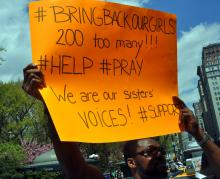
On April 15, terrorists from Boko Haram abducted more than 200 Nigerian girls sleeping in their high school dormitory. The girls awoke to a nightmare of violent gunfire as the terrorists forced them into their vehicles and vanished.
Recently the leader of Boko Haram has garnered media attention with his video arrogantly taking credit for the kidnapping. He added a religious element to his repulsive actions:
“I abducted your girls. I will sell them in the market, by Allah. There is a market for selling humans. Allah says I should sell. He commands me to sell. I will sell women.”
Omid Safi, professor of Islamic Studies at the University of North Carolina at Chapel Hill, wrote an impassioned response to Boko Haram’s leader that speaks for me: “Human beings are not for sale…This is the bastardization of Islam, of decency, of liberation, of all that is good and beautiful.”

Boko Haram is among the most vicious terrorist groups operating in North Africa, home to some of the worst Islamist extremists in the world.
The group was begun in 2002 by Mohammed Yusuf, a cleric whose aim is an Islamic state in Nigeria. He was killed in 2009. The group’s current leader, Abubakar Shekau, surfaces sporadically in videotaped messages.
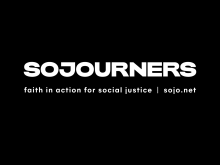
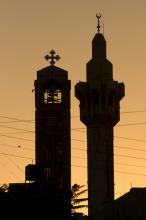
CAN YOU GO to school to become an interfaith leader? An increasing number of faculty, staff, and students on campuses believe the answer is “yes.”
Interfaith leadership courses are starting to crop up at colleges across the country. At New York University and Nazareth College, you can even get a minor in the area. The organization I lead, Interfaith Youth Core, recently organized a conference for university faculty interested in this area. We expected 30 people to show up, and got nearly 120. This all suggests that this may be a field whose time has come.
Academically speaking, “interfaith leadership” is part of the larger field of “interfaith studies.” Just as you might study education at a university to become a teacher, in the future you will be able to take coursework in interfaith studies in preparation for a career in interfaith leadership.
Interfaith studies looks at the myriad ways that people who orient around religion differently interact with one another and considers the implications of that interaction for everything from personal lives to global politics. It’s a field that asks questions such as: In what religious groups is the intermarriage rate growing fastest, and what are the distinctive dynamics of such relationships? What types of political arrangements seem to foster positive interaction between faith communities, and what types are associated with interreligious tension? How effective are current religious education programs in forming young people in faith traditions?
What does it take to educate and parent African-American children, all while maintaining family values?

The Supreme Court on Monday declined to hear an appeal from a family seeking asylum in the United States because home schooling is not allowed in their native Germany.
The case involves Uwe and Hannelore Romeike, Christians who believe German schools would have a bad influence on their six children. The family’s case became a rallying point for many American Christians.
As is their custom, the justices on the high court declined to give a reason for not hearing the case.
Michael Farris, chairman of the Home School Legal Defense Association that represents the family, said the group would pursue legislation in Congress to allow the family to stay. But the Romeikes will likely face deportation.
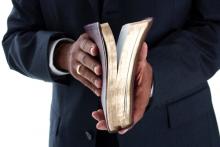
Our changing cultural values continually affect our spiritual lives and often shape our church experiences. Today’s churches aren’t immune from social trends and factors, and here are a few traditional practices that are becoming extinct within faith communities:
1. Discipline:
In a spiritual climate that’s extremely sensitive and wary of legalism, any type of authoritative action taken by a pastor or church can be highly explosive — often interpreted as aggressive, controversial, and hurtful.
Previous church models of authority and discipline have been so abused, and have such a bad historical reputation, that many Christian communities have simply abandoned the practice of church discipline.
Combine these factors with an overwhelming selection of churches to attend — where any type of discomfort can result in parishioners leaving to go elsewhere — and you can understand why spiritual leaders are reluctant to enforce any type of accountability.
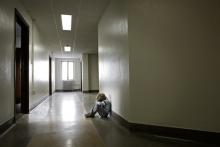
Despite all the modern conveniences of the 21st century, our information-saturated culture, an exhaustive supply of self-help books, and giant advances in medical technology, doesn’t it seem like our society is more stressed, our anxiety higher, and more of our kids prescribed behavior modification drugs?
What if one of the reasons for our strung-out culture was the social, emotional, mental, and physiological outworking of the effects of poverty?
In the latest release of the Shriver Report, Dr. Nadine Burke Harris, founder of the California Pacific Medical Center’s Bayview Child Health Center, has found through medical research and experiences of her patients that the stress of poverty can be manifested in alarming behaviors and predispositions.

The only way to win the “war on poverty” is for liberals and conservatives to make peace — for the sake of the poor. That would be the best way to mark the 50th anniversary of the war on poverty, declared by President Lyndon Johnson in his January 1964 State of the Union address. Making peace means replacing ideologies with solutions that actually solve the problems of poverty. With both Republicans and Democrats speaking out on poverty this week, and the recession slowly receding this should be an opportunity to find the focus, commitment, and strategies that could effectively reduce and ultimately eliminate the shameful facts of poverty in the world’s richest nation.
For any proposal, the basic question must be whether it helps more people and families rise out of poverty and realize their dreams. This means setting aside political self-interest and thinking beyond our too often inflexible ideologies.
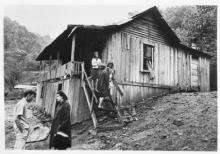
HOT SPRINGS, N.C. — The 50th anniversary of President Lyndon Johnson’s launch of the War on Poverty, which falls today, reminds us how intractable that effort can be, despite the hope and determined idealism when the legislation was signed.
Appalachia was one of the targets for the newly established Office of Economic Opportunity, utilizing programs such as Head Start and Volunteers in Service to America (VISTA). The anniversary also recalls how religion has motivated, shaped and sustained this effort, in many ways prefiguring the campaign, in both its successes and failures.
For more than two centuries, these Southern mountains have been a magnet for missionaries, both religious and secular, all determined to wipe out poverty, hunger, and ignorance — whether the region’s benighted folk wanted them to or not. Their too-common failing, local people say, is that the erstwhile do-gooders have not respected the strong beliefs and culture that already existed.
With the best intentions, altruists and uninvited agents of uplift have come with their social gospel of “fixing” local people. That is to wean them from violence and the debilitating use of alcohol, while bringing their brand of faith, along with education, nutrition, and improved living standards. Invariably well-meaning, these efforts have typically ended in disappointment and failure in places such as Madison County, N.C.
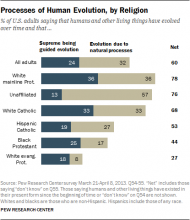
As evolution remains a contentious issue for many public schools, a new survey suggests that views on the question are driven by Americans’ religious affiliation more than their level of education.
Overall, six in 10 Americans say that humans have evolved over time, while one-third reject the idea of human evolution, according to a new analysis by the Pew Research Center. The one-third of Americans who reject human evolution has remained mostly unchanged since a 2009 Pew survey.
About one in four American adults say that “a supreme being guided the evolution of living things for the purpose of creating humans and other life in the form it exists today.”
While education matters, the new analysis suggests that religion appears to have more influence than level of education on evolution. The 21-point difference between college graduates and high school graduates who believe in evolution, for example, is less stark than the 49-point difference between mainline Protestants and evangelicals.
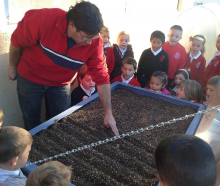
Online resources
BALLS THUMPED against the walls, jump ropes scraped the asphalt, and shrieks filled the air: The kindergarten and first-grade students of Holy Ghost Catholic School in Albuquerque, N.M., were at recess on a chilly December day. The sun was shining and the kids bumbled around in their jackets, oblivious to the cold. Also oblivious were the rows of leafy greens in the two raised-bed gardens just outside the classroom windows. The sun, plastic covers, and just enough water (which the students figured out after a failed crop or two) made for a perfect little garden oasis in the midst of winter.
Seeing me headed toward the gardens, dozens of children made a beeline for the structures, simultaneously shouting “Miss! Can I see?” “Miss, I’ll water them!” They helped me lift the cover to reveal a jungle of rainbow chard, kale, spinach, salad greens, a few radishes, and basil—a kaleidoscope of greens, golds, pinks, and yellows.
“Miss, can I have chard?” Mateo looked at me hopefully, chubby fingers pointing to the rainbow chard. “Sure!” I exclaimed, gently breaking off a leaf. “If you can name it, you can taste it!” Suddenly there were 15 hands in front of me, along with a litany of names: “The pink one!” “Chard! Chard!” “Can I have that spinach?!”
Not everyone was as enthusiastic. “Yuck,” Lenaia said when I offered her a piece of spinach. “I don’t want to eat it, but I’ll water it.”
American Promise spans 13 years as Joe Brewster and Michèle Stephenson, middle-class African-American parents in Brooklyn, N.Y., turn their cameras on their son, Idris, and his best friend, Seun, who make their way through one of the most prestigious private schools in the country. Chronicling the boys’ divergent paths from kindergarten through high school graduation at Manhattan’s Dalton School, the documentary presents complicated truths about America’s struggle to come of age on issues of race, class, and opportunity. American Promise is an Official Selection of the 2013 Sundance Film Festival.

In my lifetime I’ve driven on three roadways named after Martin Luther King, Jr. One was a street, another a boulevard, and the third a highway. And whether by cosmic irony or human design, each of these roadways passes through communities of significant poverty and color, namely black. Around these roadways are boarded up storefronts, crack and heroin dens (think The Wire), condemned row houses, and inevitably, always – public schools.
From 2001 to 2006 I left the safety of the pulpit to teach in the schools of Baltimore and Washington, D.C., pursuing a call to care for the proverbial least of these (it’s always pained me to think how I might feel to be called this, as in hey, you least of these, can I help you with anything? – but that’s a reflection for another time). I left also the safety of a suburban megachurch, where all you needed to do to understand the socioeconomic standing of its members was to walk through the parking lot, and the familiar cultural context of my Korean-American upbringing.
This article, however, is not about me. It’s about beautiful, creative, energetic, and intelligent children — kids who, as the least of these, are too often treated as such. There is no limit to blame: from the mother who comes to school drunk, a prostitute, publically shaming her son (who loves her nonetheless and gets beaten by the other boys defending her honor); to the worn-out teacher who drags a “difficult” child into the bathroom, bruising her arms and threatening her with verbal vitriol and rage; to the administration that promotes student after student, knowing they are years behind, but too old to remain; to the system that maintains, protects, and worships a biblical truism, that for to all those who have, more will be given, and they will have an abundance; but from those who have nothing, even what they have will be taken away (Mt.25:29).

I remember the first time I ever got straight A’s. It was also the last time.
I was in Mrs. Becker’s 4th grade class at John Story Jenks School in Philadelphia. I was always good at reading, I LOVED science projects, and art class was fun — but math? Ugh. Math was my nemesis. In 4thgrade the times tables felt as insurmountable as that dang rope everybody else could whiz up and down in gym class. I just couldn’t figure it out. In fact, to this day, I haven’t figured the rope.
So, my father became my times tables drill sergeant and resorted to straight memorization tactics, making me write each one 10 times. Then he sat across from me at the dining room table and drilled me on the times tables until I said them in my sleep. It was brutal … and oddly, one of the fondest memories of my elementary school years. Not only did I master multiplication, but I also learned something much more important. When my report card came back that quarter with straight A’s, I learned that I could learn!
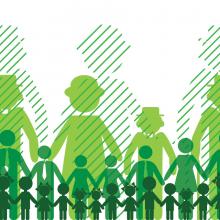
I love October. As a teacher, it was that time of year where rhythms were becoming established and the seeds of learning were beginning to sprout. In ministry, it is the time where I find myself riding the waves of my student’s school schedules in an effort to connect and converse. In either case, education, shapes not on the schedule of my life but the purpose.
As I breathe in the crisp autumn breeze, it reminds me to consider the larger partnership between the educators and the church. When we, as ministers and church leaders, consider what role education plays in the life of the church, we have to consider the active part of the church in the education of not only the church community, but its larger context.
Education, in the public context, is a constant topic of political struggle and strife. Education, in the ecclesial context, in its best is in-depth Bible study and at its worst is education by osmosis and observation. What is the call or consideration of the church to the topic of education? What role does the church have in the education of the community?
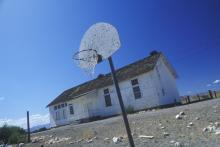
Most Americans share a common understanding that many public schools in poor neighborhoods aren’t great. It’s rare that I engage anyone who doesn’t know this basic fact on some level. But what’s less common is a deeper understanding of the extent of the problem. And sadly, even less common than that? Finding individuals who express a deep conviction that educational inequity can be eliminated. Faith communities are poised to add our voices to this much-needed conversation.
Fifteen million children live in poverty in the United States. Given poverty’s impact, many of these children already face additional challenges in their lives. For many young people, education can be “the great equalizer.” A high quality school can provide students with the necessary foundation to go to college and have a variety of opportunities opened to them. Poverty can become a thing of the past. But students growing up in poverty are more likely to attend low-performing public schools. In fact, only 22 percent of children who have lived in poverty do not graduate from high school. Only 9 percent receive college diplomas. And, not surprisingly, given our nation’s historical intersection of racial injustice and poverty, African American, Latino, and Native American students experience some of the nation’s biggest educational inequities.
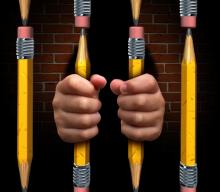
Over the last few years we have heard much about the school to prison pipeline. According to the ACLU, it is:
a disturbing national trend wherein children are funneled out of public schools and into the juvenile and criminal justice systems. Many of these children have learning disabilities or histories of poverty, abuse or neglect, and would benefit from additional educational and counseling services. Instead, they are isolated, punished and pushed out.
The Children’s Defense Fund argues that because of a lack of early childhood education and healthy beginnings, this epidemic begins before a child is old enough to enroll in school, defining the problem as the Cradle to Prison pipeline. Organizations such as the Advancement Project, the Legal Defense Fund, and many others too have defined the school-to-prison pipeline as just another level to the mass incarceration epidemic and one of the most disturbing injustices we face today.
We know that the pipeline is undergirded by Zero Tolerance policies, mass expulsions, unprecedented school arrests, inadequate school funding, and myriad other unjust policies that either criminalize our children or rob them of the resources they need to be successful. We also know that high-school dropout is certainly a station on the pipeline. In many urban centers the dropout rate hovers around 50 percent, and some data suggests 7,000 students drop out of school every day. What happens to kids that drop out of school? Where do kids who are expelled end up?